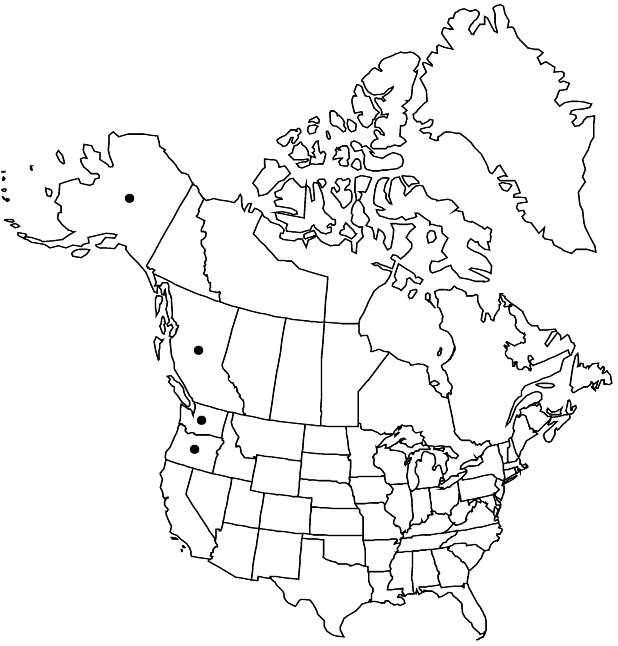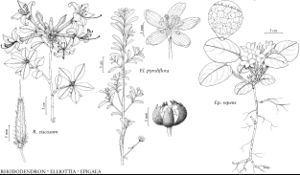Elliottia pyroliflora
J. Arnold Arbor. 59: 336. 1978 ,.
Shrubs, 0.5–3 m, ± spreading; older twigs with copper-colored, shreddy bark, twigs of current season green, glabrous or sparsely hairy. Leaves alternate or seemingly whorled at ends of twigs; petiole 1–4 mm; blade elliptic to oblanceolate, (1.5–)2–5 × 0.6–1.4 cm, base cuneate, margins flat, apex mucronate, surfaces glaucous. Inflorescences terminal, solitary flowers or 2–3-flowered cymes, 2–4 cm; bracts leaflike, lanceolate, 10–15 mm, margins entire. Pedicels 5–10 mm, with 1–2, persistent bracteoles distally. Flowers: calyx lobes 5, lanceolate, 7–10 × 2–4 mm, apex acute, ciliate along margins especially basally; corolla 5-lobed, petals pinkish or copper colored, narrowly elliptic, 10–15 mm; stamens 8(–10); filaments glabrous; anthers 1.7–2 mm; style (persisting in fruit), curved or recurved, 10–12 mm. Capsules 5–6-parted, spheroidal, 5–8 mm, finely pitted, glabrous. Seeds 0.5–0.8 mm, testa with conspicuous cells. 2n = 22.
Phenology: Flowering Jun–Jul.
Habitat: Moist, coniferous forests and associated habitats in mountainous regions with cool temperatures and high rainfall, especially stream banks, bog edges, tree clumps, and forest edges in subalpine parkland
Elevation: 0-2500 m
Distribution

B.C., Alaska, Oreg., Wash.
Discussion
Elliottia pyroliflora has a wider geographic and elevational range than E. racemosa; it is considered difficult to grow.
Selected References
None.
